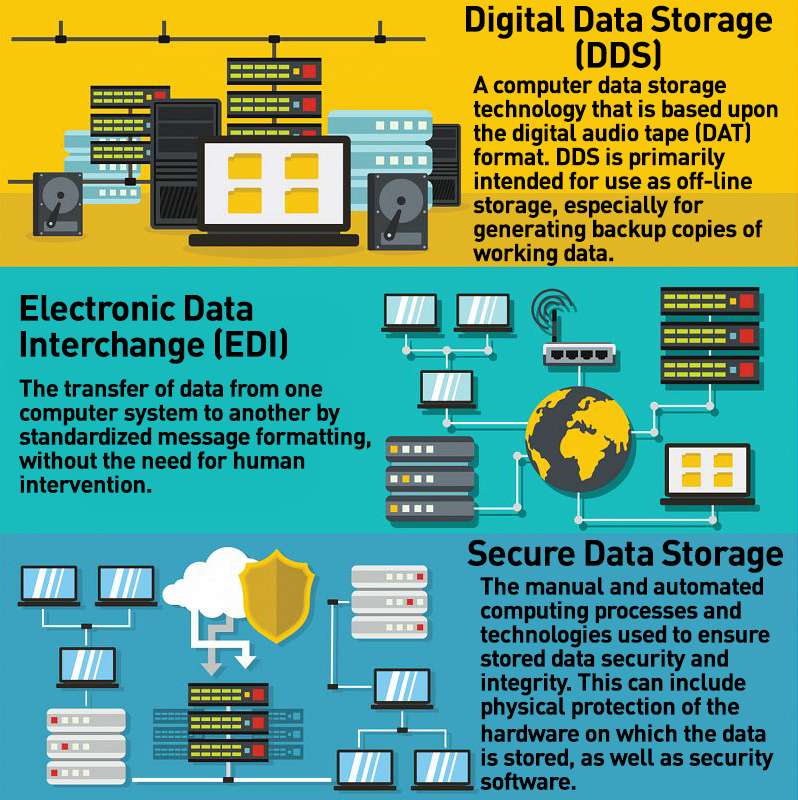How to Incorporate Data Destruction Techniques right into Your Cyber Security Strategy
How to Incorporate Data Destruction Techniques right into Your Cyber Security Strategy
Blog Article
The Value of Effective Information Destruction Practices in Safeguarding Sensitive Info and Ensuring Computer System Protection
In an era where information violations are increasingly typical, the importance of efficient information destruction practices can not be overstated. Organizations face substantial risks when delicate details is inadequately disposed of, possibly leading to unauthorized access and extreme monetary consequences. Implementing robust information damage methods not just alleviates these dangers but additionally straightens with legal compliance requirements, guaranteeing that companies copyright their credibility and foster customer depend on. However, the question remains: what specific approaches can be utilized to enhance these techniques, and exactly how can organizations effectively integrate them right into their general cybersecurity structure?
Comprehending Data Destruction
Recognizing information damage is vital in today's digital landscape, where delicate info can quickly be jeopardized. Reliable information devastation includes not just making certain but removing files that information is irretrievable with comprehensive approaches. This process is crucial for organizations that take care of private client details, intellectual property, or inner papers, as any type of violation can bring about extreme financial and reputational repercussions.
Data devastation incorporates various methods, consisting of shredding physical media, degaussing magnetic storage gadgets, and utilizing software-based remedies that overwrite information numerous times. Each technique serves a specific purpose and must align with the level of sensitivity of the details being gotten rid of. As an example, physical destruction is frequently favored for hard disks having very private information, while software application techniques may be enough for less delicate info.
Furthermore, sticking to market standards and laws, such as the General Data Defense Guideline (GDPR) or the Health And Wellness Insurance Coverage Transportability and Responsibility Act (HIPAA), is necessary for compliance and to alleviate legal dangers. Organizations must create a robust data devastation policy, train workers on ideal practices, and on a regular basis investigate their treatments to ensure that all sensitive details is gotten rid of firmly and efficiently.
Risks of Inadequate Practices
Insufficient information destruction practices subject companies to substantial risks that can have significant repercussions. When delicate details is not properly gotten rid of, it continues to be at risk to unauthorized access, which can cause information violations and identification burglary. Such incidents not only compromise the safety and security of people yet additionally tarnish the organization's credibility, leading to a loss of client depend on and prospective financial repercussions.
Furthermore, regulative compliance is progressively strict in numerous industries. Failing to follow data destruction policies can result in hefty fines and lawsuits against organizations. These fines can stress funds and divert attention from core organization procedures.
Additionally, the misuse of recurring information can result in copyright theft or company reconnaissance, jeopardizing affordable benefits (data destruction). The effect of poor information damage extends past instant financial losses; it can additionally lead to long-term damage to brand name stability and market placement

Organizations must recognize that information security is not solely regarding avoiding breaches; it likewise encompasses the responsible administration of data throughout its lifecycle. Neglecting reliable data damage methods can have disastrous implications, highlighting the need for robust measures to alleviate these risks.
Ideal Practices for Data Damage
Executing reliable data devastation practices is necessary for protecting delicate information and keeping conformity with regulative criteria. Organizations should adopt a multi-faceted technique to make certain that data is irretrievable, thereby protecting against unauthorized access and prospective violations.
First, data ought to be classified based on sensitivity, enabling companies to use ideal destruction methods tailored to the level of threat. For electronic data, using software-based data-wiping devices that abide with industry criteria can properly overwrite existing data. Physical destruction techniques, such as shredding or degaussing, are essential for tools that keep sensitive info, making certain full elimination.
Establishing a clear information retention policy is essential, detailing exactly how long imp source various sorts of details need to be preserved prior to destruction. Routine audits of information storage space systems are additionally needed to identify unneeded or obsolete data needing elimination.
In addition, training staff members on the value of data damage and straight from the source the certain protocols to follow fosters a culture of security within the organization. Finally, keeping paperwork of data devastation processes offers accountability and sustains compliance with internal plans and external laws. By adhering to these finest practices, organizations can dramatically reduce the threats connected with information exposure.
Legal and Conformity Considerations

Failure to comply with these guidelines can cause extreme fines, consisting of significant penalties and reputational damages. Organizations must carry out a durable information devastation plan that straightens with these lawful structures and gives clear standards on the correct approaches of information disposal, whether physical shredding or digital cleaning.
Additionally, keeping paperwork of data destruction tasks is vital for showing conformity during audits or assessments. By prioritizing legal and compliance try these out factors to consider, companies can improve their data safety stance and foster trust fund with customers and stakeholders, ultimately adding to an extra safe information administration atmosphere.
Benefits of Effective Information Damage
Efficient data devastation methods extend past simple conformity; they use significant benefits to organizations that prioritize them. By guaranteeing that delicate info is irretrievably destroyed, companies reduce the risk of information breaches and the possible monetary repercussions linked with them. This positive approach not just safeguards against unapproved gain access to but additionally enhances the total credibility of the organization in the eyes of stakeholders and clients.
Implementing durable information destruction approaches, such as physical destruction of storage space devices or sophisticated information wiping strategies, adds to the conditioning of an organization's cybersecurity stance. data destruction. It decreases the likelihood of intellectual home burglary and protects exclusive details, thus keeping an one-upmanship in the market

Final Thought
In conclusion, reliable data devastation techniques are necessary for safeguarding delicate details and enhancing total computer protection. By executing detailed methods such as software, degaussing, and shredding overwriting, organizations can alleviate the dangers connected with unauthorized accessibility and data breaches. Adherence to regulatory criteria, including GDPR and HIPAA, additional strengthens conformity and shields against lawful repercussions. Ultimately, a commitment to robust data damage approaches cultivates a society of responsibility, thereby strengthening a company's cybersecurity stance and maintaining customer trust.

Report this page